Many cat lovers care for feral cats by providing food, water, shelter, and medical care.
But should more be done? Should feral cats be socialized with humans so that they can be adopted into loving homes as affectionate pets?
Is that even possible? Let's take a look at the question of taming feral cats and see if and when that's a goal worth pursuing.
What are feral cats?
Feral cats are those born and raised with little or no contact with humans. They are usually street cats that find food in trash cans or maybe hunt the occasional rodent or bird.
The lucky ones are fed by caring humans who provide shelter and medical care. Responsible caregivers make sure to spay or neuter these cats as well.
Feral cats are not stray cats. They're not lost or abandoned by past owners. Unlike stray cats, they generally see humans as threats and shy away from people.
That happens because they had no positive association with humans during their kittenhood. Read more about how to tell a feral cat from a stray.
SIGN UP FOR THECATSITE'S EMAIL UPDATES >
Feral cats are not wild animals, either.
They are domestic felines biologically identical to our pampered pet cats. You can read more about feral cats in the following articles:
Feral Cats - The Invisible Felines
10 Facts You Should Know About Feral Cats
A Feral Cat Or A Stray Cat? How To Tell The Difference
While feral cats are not wildlife, they often behave like wild animals. They're scared of humans and shy away from anyone they don't know and trust.
Once trapped, feral cats can and will turn very aggressive against anyone who tries to touch them.
What does taming a feral cat mean?
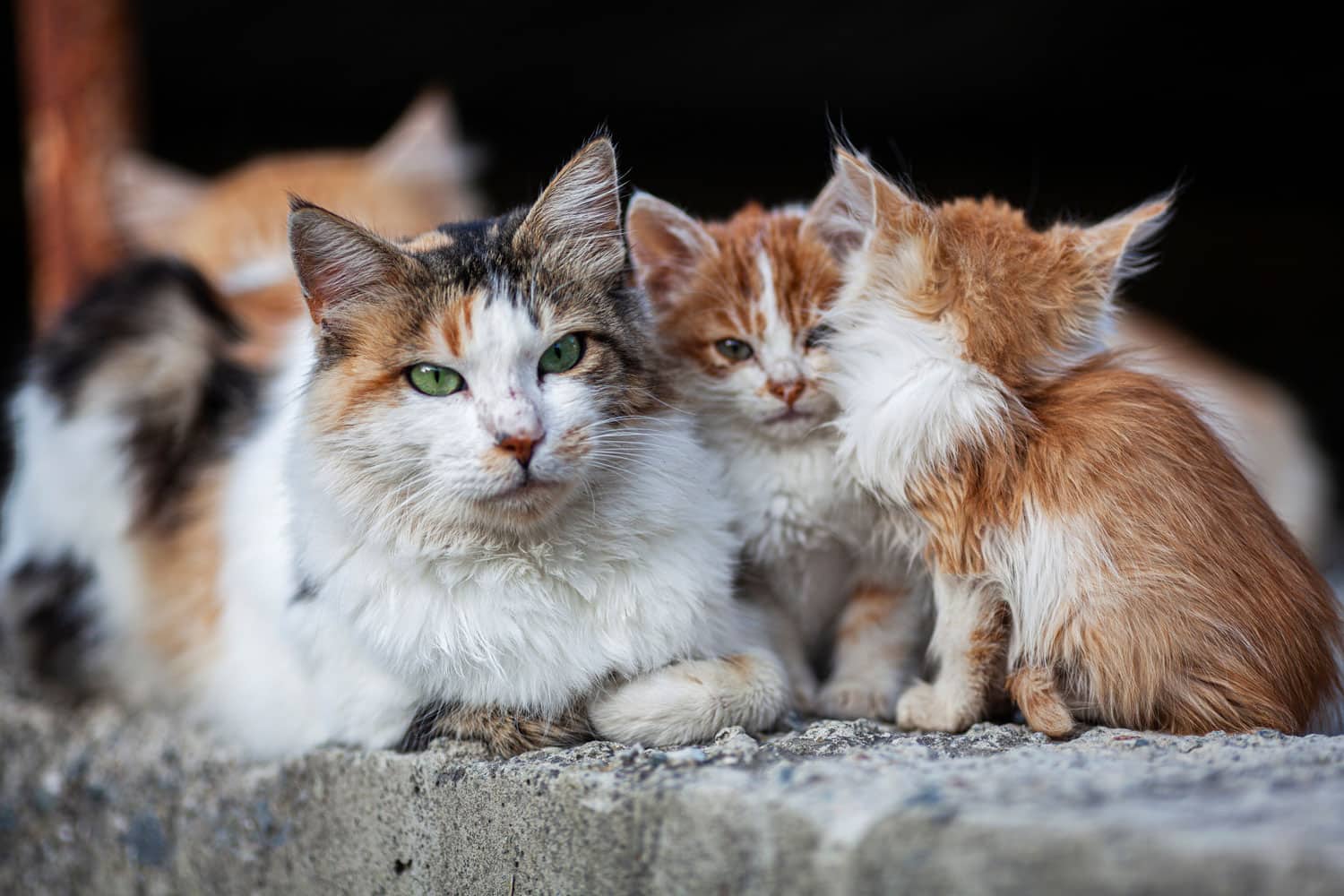
Taming is the process where an animal's behavior changes from wild and hostile towards humans into more docile and sometimes even affectionate towards humans.
As many rescuers know, feral cats can be tamed. It is possible to teach a feral cat to trust humans.
These are domestic animals, after all, so when taming is successful, feral cats can actually become very affectionate towards their humans.
The taming process is usually long. It involves trapping the cat and confining him or her in a small space.
An experienced rescuer then uses various techniques to help the cat lose its fear of humans and—with any luck—get him or her to enjoy human contact.
Should you try and tame a feral cat?
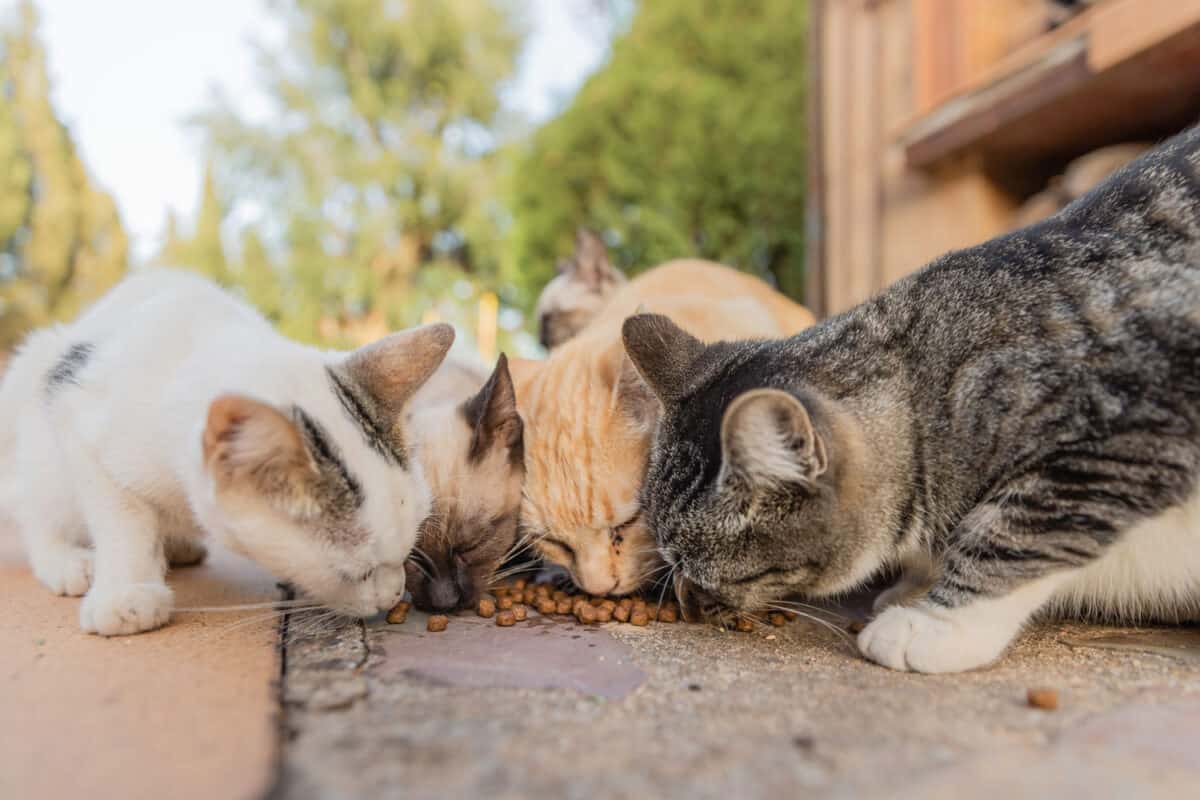
Taming a feral cat is not easy. Results are never guaranteed either: Just how tamed the cat will turn out to be differs from case to case.
The process itself requires time and effort from a dedicated human.
What's more, trapping and confinement—necessary for taming a feral—are stressful for the cat. In many cases, the cat will never be entirely comfortable around people.
There's also a good alternative to taming: The cat can continue to live life as a feral. After all, feral cats can live happy and long lives if they have a dedicated human caring for their needs:
- Food
- Shelter
- Medical care
- Spaying and neutering
So why should you even try to tame a feral cat?
If and when taming is successful, the cat can be adopted into a loving safe home.
There's no arguing that pet cats enjoy a better quality of life and are safe from predators, the elements, or harm from humans.
A constant supply of food, excellent medical care, and lots of love in the safety of a home are always better than life on the streets.
So when should you give it a try?
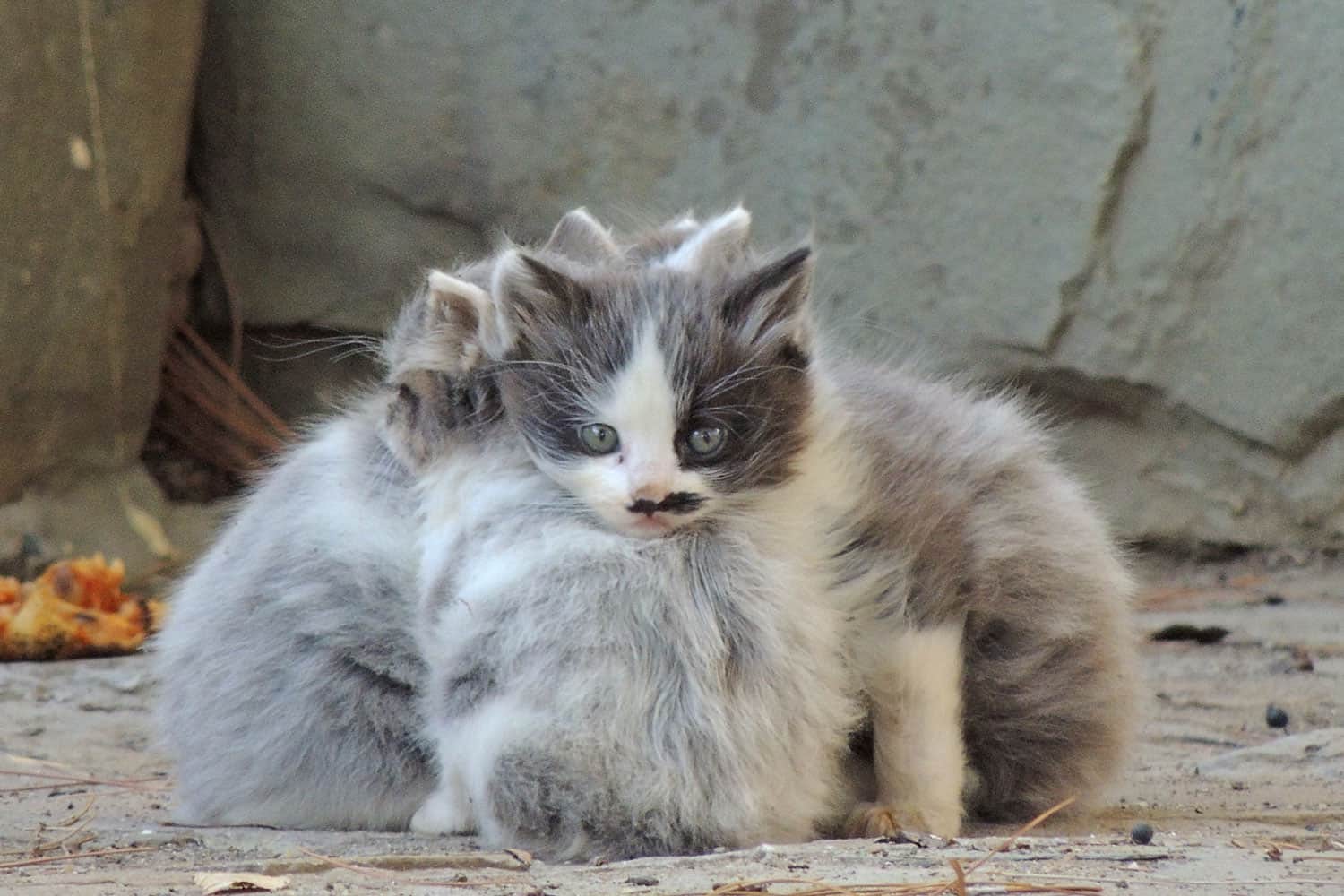
Given the pros and cons, when should taming a feral cat be considered?
Generally speaking, adult feral cats should not be tamed.
In all likelihood, the process will be too stressful for them to justify the result.
In a world where so many well-socialized stray cats are in dire need of good homes, feral cats are best cared for in their natural environment.
You should consider making an exception in the following cases:
1. Feral kittens
The younger the kittens, the easier it will be to tame them. In fact, with very young kittens, it's not so much about taming as about properly socializing them, just like you would a kitten born in a home.
Kittens younger than four weeks are not likely to be hostile to humans yet as they have barely opened their eyes, so they shouldn't even be considered feral.
A few weeks later, the kittens may have acquired a fear of humans as learned behavior from the mother cat.
Yet they are still very young and flexible, so you should be able to work with them and socialize with them within a few weeks.
2. When the cat needs continued medical help
When a feral cat is injured or sick, caregivers usually trap him or her and get them to a veterinary clinic.
Vets that know how to work with ferals can offer suitable solutions to most problems.
For example, if stitches are required, they would use dissolving ones to save the cat another trip to the clinic. If antibiotics are needed, they will opt for a slow-release injection.
Sometimes a feral cat needs more than that.
A feral cat that's diagnosed with a chronic disease may need medical treatments on a daily basis for the rest of his or her life.
A sudden disability may mean the cat can no longer survive outside and must be cared for in a home.
When that happens, taming the cat and helping him or her adjust to people may be unavoidable.
What about after the cat is tamed?
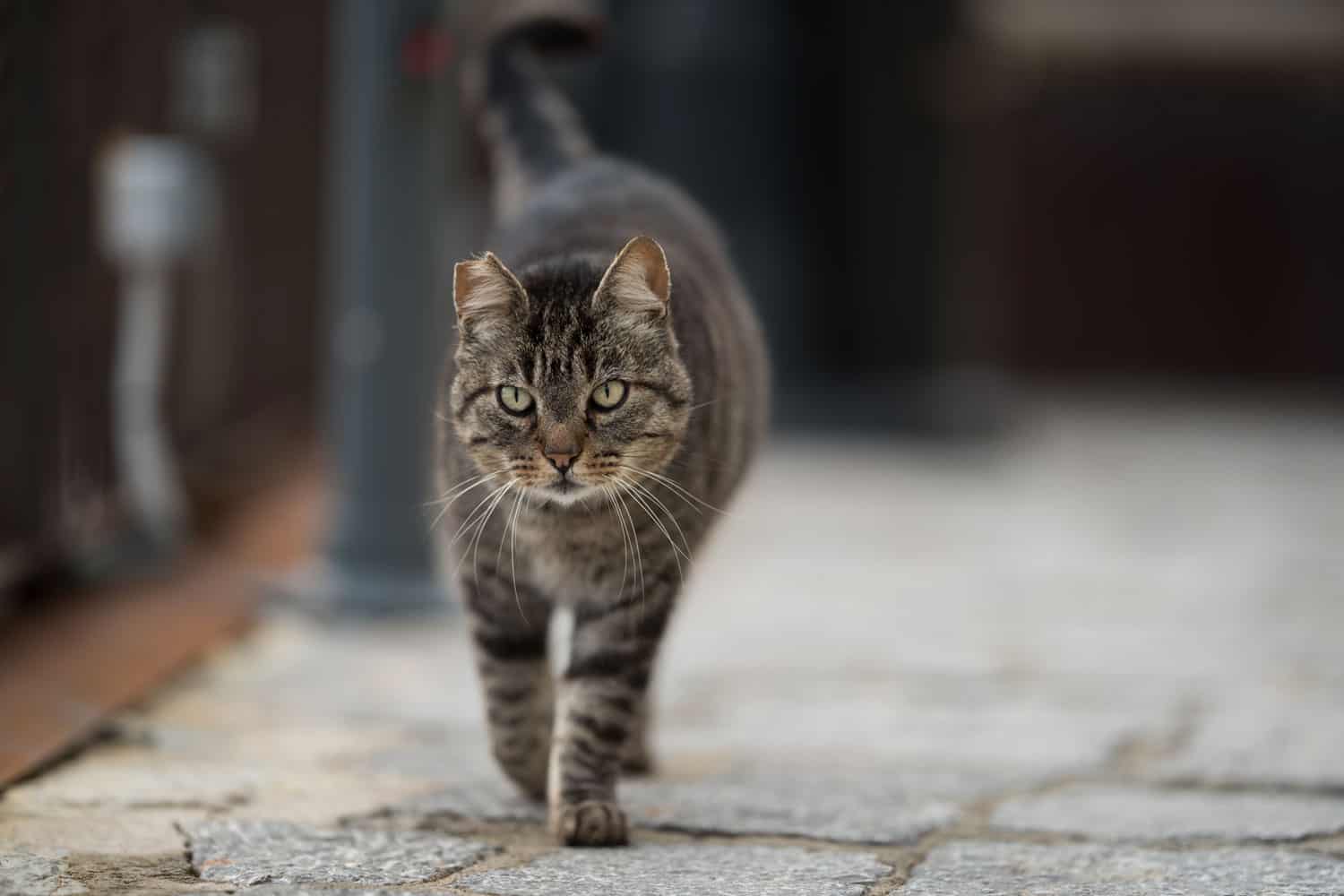
Always consider the next step. Taming a feral cat can be a long process, but what happens to the cat once it's done? Are you going to adopt that cat? If not, can you find him or her a suitable home?
Kittens are easier to find homes for. Adult cats, not so much. Caring for an adult former feral—and possibly still semi-feral cat—may be too much for some owners.
The odds of finding a good home for such a cat may be too low to justify putting him or her through the additional stress of the taming process.
If you decide that a feral cat or kitten needs to be tamed, ask for help. Unless you're an experienced caregiver of feral cats, do not attempt this on your own.
Look for organizations that work with feral cats in your area and see if you can get a mentor. Post about your situation in our Caring for Feral & Stray Cats forum and ask our members for advice and support.
Taming a feral cat can be a long and difficult process for all involved. It should not be entered into lightly. However, it is also very rewarding.
There is nothing quite like gaining the trust and love of a feral!
What about you? Have you ever tamed a feral cat? Share your experience in a comment—we'd love to hear from you!
SIGN UP FOR THECATSITE'S EMAIL UPDATES >
Note: We may get commissions for purchases made through links on this page.

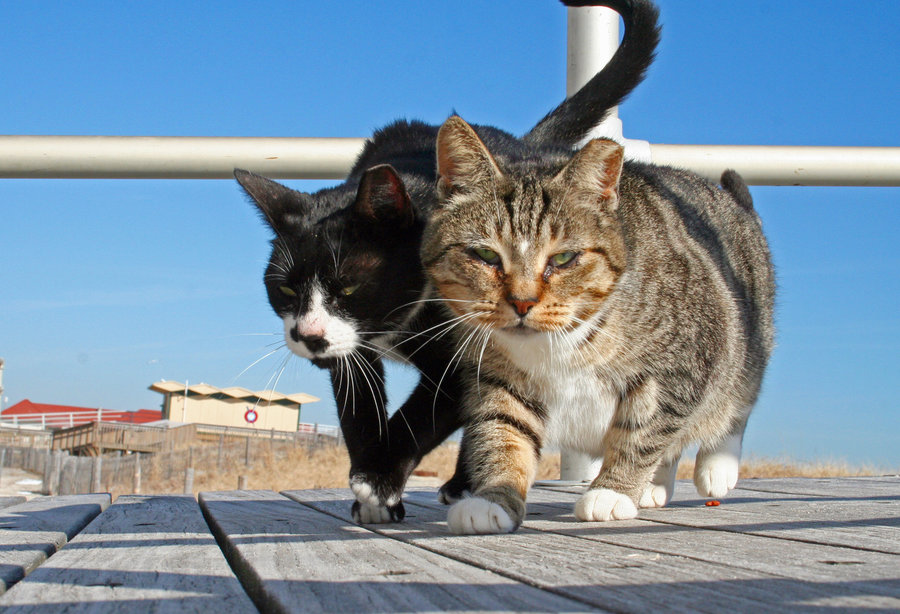


23 comments on “Should You Try And Tame A Feral Cat?”